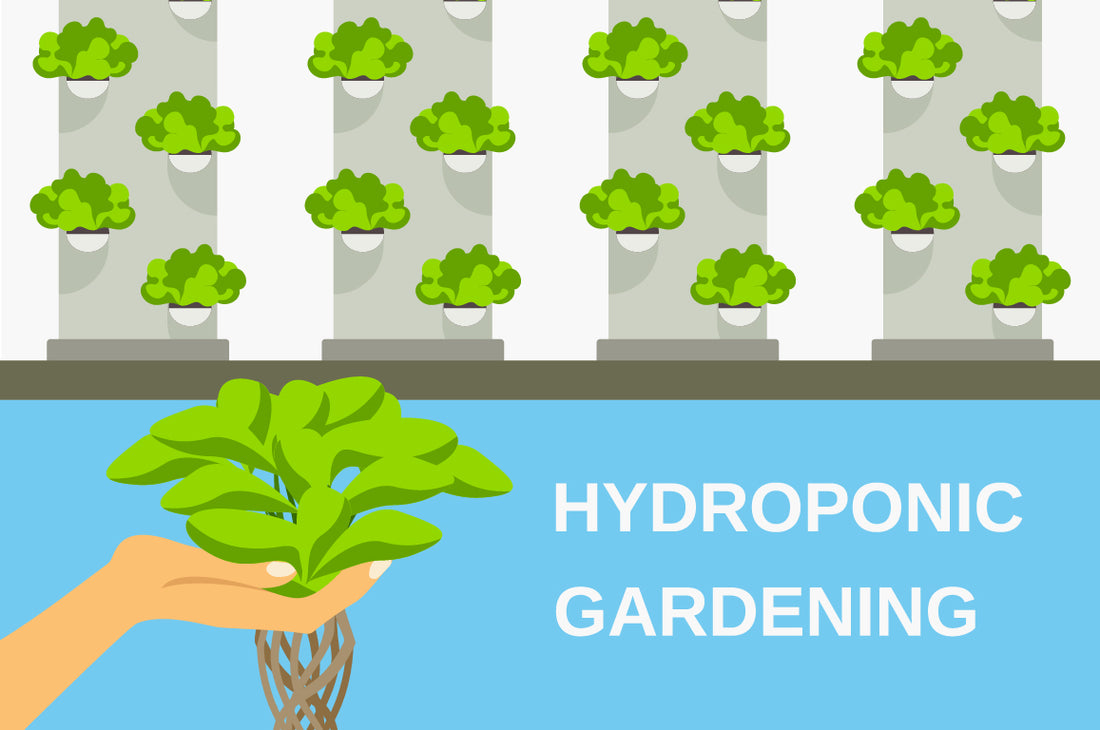
Everything You Need to Start Your Own Hydroponic Garden
Share

The practice of hydroponic gardening has been around for thousands of years. This technique fosters plant growth in a water system without the use of soil, and modern indoor gardens can be quite elaborate. However, a good hydroponic system doesn't have to be complicated; with just a few basic materials, you can build you own effective water garden. Below, we'll introduce the basic components that are needed for a successful hydroponic system.
1. Container
All hydroponic gardens require some type of container or tank to hold the solution that nourishes the plants. Many homemade indoor hydroponic gardens use large storage containers, sinks or even children's pools as water tanks. Various every day items can be used as a container as long as they are waterproof and can block out light. A good rule of thumb is to have a container that is 6 to 18 inches deep and 2 to 3 feet wide.
2. Support platform or Plant Bed
A plant bed is needed to support plant growth and should ideally be large enough to completely cover the container. In a hydroponic system where the roots are grown directly in the water, the plants are placed in holes on the platform and secured around the stem with cotton or similar material. Homemade systems typically use a thick piece of styrofoam or the lid of a storage container as a platform.
For aggregate culture systems, plants are placed in a non-soil growing medium, also known as aggregate or litter. Aggregate can be added to individual mesh containers on a support platform, or you can add the aggregate to a trough with a perforated bottom. The nutrient solution is then applied to the aggregate so that it can be absorbed by the roots.
3. Materials
A variety of materials can be used as hydroponics aggregates, such as sand, gravel, vermiculite, wood shavings, peat moss, perlite, and a fibrous stone called rock wool. This material should be inert and not provide nutrients to the plant. It should also be sturdy enough to adequately support the plant as it grows and be at least 3 inches thick.
4. Nutrient
All the nutrients that plants need to grow must be provided by the nutrient solution. Nutrients that need to be present in the solution include nitrogen, phosphorus, potassium, calcium, magnesium, sulfur, iron and copper. Given their wide commercial availability, premixed nutrient solutions are easier and often more efficient than trying to make homemade solutions.
5. Ventilation
Plants need oxygen so that their roots can properly absorb nutrients. This means that you'll need an aeration method to ensure there is sufficient oxygen in the nutrient solution. For smaller gardens or a hydroponic grow box, this can be done simply by emptying out and refilling the solution. Larger systems often use bubblers, similar to those in aquariums, to keep the nutrient solution oxygenated.
6. Light
Hydroponic gardens can be grown either indoors or outdoors. Since plants, especially vegetables, need plenty of light to thrive, an indoor garden will need an artificial light source. You can use either fluorescent or incandescent light bulbs as long as they provide a sufficient amount of both red and blue light rays.
